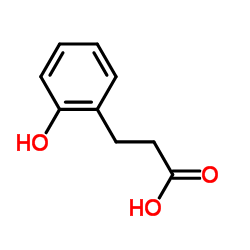Catabolism of phenylpropionic acid and its 3-hydroxy derivative by Escherichia coli.
R Burlingame, P J Chapman
文献索引:J. Bacteriol. 155(1) , 113-121, (1983)
全文:HTML全文
摘要
A number of laboratory strains and clinical isolates of Escherichia coli utilized several aromatic acids as sole sources of carbon for growth. E. coli K-12 used separate reactions to convert 3-phenylpropionic and 3-(3-hydroxyphenyl)propionic acids into 3-(2,3-dihydroxyphenyl)propionic acid which, after meta-fission of the benzene nucleus, gave succinate, pyruvate, and acetaldehyde as products. Enzyme assays and respirometry showed that all enzymes of this branched pathway were inducible and that syntheses of enzymes required to convert the two initial growth substrates into 3-(2,3-dihydroxyphenyl)propionate are under separate control. E. coli K-12 also grew with 3-hydroxycinnamic acid as sole source of carbon; the ability of cells to oxidize cinnamic and 3-phenylpropionic acids, and hydroxylated derivatives, was investigated. The lactone of 4-hydroxy-2-ketovaleric acid was isolated from enzymatic reaction mixtures and its properties, including optical activity, were recorded.
相关化合物
| 结构式 | 名称/CAS号 | 分子式 | 全部文献 |
|---|---|---|---|
 |
3-(2-羟苯基)丙酸
CAS:495-78-3 |
C9H10O3 |
|
Constituents of Justicia pectoralis Jacq. 2. Gas chromatogra...
1988-04-15 [Biomed. Environ. Mass Spectrom. 15(8) , 413-417, (1988)] |
|
Antiulcerogenic compounds isolated from Chinese cinnamon.
1989-06-01 [Planta Med. 55(3) , 245-248, (1989)] |
|
Microbial metabolism of catechin stereoisomers by human faec...
[Phytochem. Lett. 1(1) , 18-22, (2008)] |
|
Structure of 3-(2-hydroxyphenyl) propionic acid. Begum NS, e...
[Acta Crystallogr. C 48(6) , 1076-1078, (1992)] |